Pump Handbook by Igor J. Karassik, Joseph P. Messina, Paul Cooper, Charles C. Heald - 3rd edition
Подождите немного. Документ загружается.

9.124 CHAPTER NINE
resistance.The two ends are joined by various welding techniques, and the combination
of metals is therefore limited to those that can be easily welded together. On such
assemblies, the weld joint and the heat-affected zone must be outside the wetted area
of the shaft.
Sealless Pumps Elimination of the sealing chamber and its associated problems has
been the objective of several pump designs. Refer to Subsection 2.2.7 for sealless canned
motor pumps and magnetically driven pumps. Diaphragm pumps previously mentioned
are sealless pumps.
Vertical immersion pumps utilize sleeve bearings in the area immediately above the
impeller to limit the flow of liquid along the shaft. For chemical service, the problem of
materials associated with this bearing and its lubrication has to be addressed on an appli-
cation basis.
CONSTRUCTION OF NONMETALLIC PUMPS______________________________
A number of non-metallic materials have been used extensively in chemical pump con-
struction (refer to Section 5.2). Their excellent chemical resistance makes them competi-
tive with stronger metal alloys.
CHEMICAL PUMP STANDARDS_________________________________________
In 1962, a committee of the Manufacturing Chemists Association (MCA) reached agree-
ment with a special committee of the Hydraulic Institute on a proposed American Stan-
dards Association (ASA) standard for chemical process pumps. This document was
referred to as the American Voluntary Standard or the Manufacturing Chemists Associa-
tion Standard. In 1971, it was accepted by the American National Standards Institute
(ANSI) and issued as ANSI Standard B123.1. This ANSI standard was renumbered in
1974 to ANSI B73.1, then to ANSI B73.1M in 1984.
It is the intent of this standard that pumps of similar size from all sources of supply
shall be dimensionally interchangeable with respect to mounting dimensions, size and loca-
tion of suction and discharge nozzles, input shafts, base plates, and foundation bolts. Table
1A and B lists the pump dimensions that have been standardized, and a cross-sectional
assembly of a pump meeting these criteria is shown in Figure 1.
It is also the intent of this standard to outline certain design features that will mini-
mize maintenance problems.The standard states, for instance, that the pump shaft should
be sized so the maximum shaft deflection, measured at the centerline of the impeller when
the pump is operating under its most adverse allowable conditions, will not exceed 0.005
in (0.127 mm). It does not specify shaft diameter because impeller diameter, shaft length,
and provision for operation with liquids of high specific gravity would determine the
proper diameter.
The standard also states that the minimum bearing life, again under the most adverse
operating conditions within the allowable operating region, should be not less than two
years. Bearing size is not specified but is to be determined by the individual manufacturer
and will be dependent upon the load to be carried.
Additional specifications in the standard include hydrostatic test pressure, shaft finish
at rubbing points, packing space, and seal chamber space.
ANSI B73.2M covers vertical in-line centrifugal pumps for chemical process. Dimen-
sional criteria are shown in Table 2A and B, and a pump meeting these requirements is
shown in Figure 2.
ANSI B73.5M-1995 is the Specification for Thermoplastic and Thermoset Polymer
Material Horizontal End Suction Centrifugal Pumps for Chemical Process.A typical com-
posite pump meeting these requirements is shown in Figure 3. Codes for acceptance tests
are given in the American National Standard for Centrifugal Pump Tests, ANSI/HI 1.6-
2000 (see References and Further Reading at the end of the section).
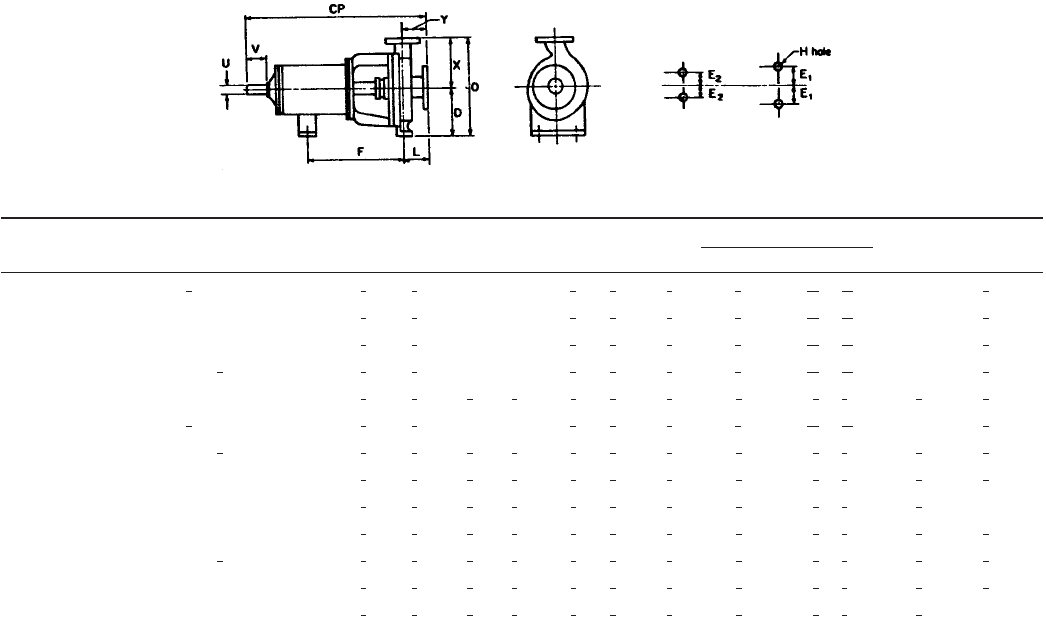
9.125
TABLE 1A Standard ANSI B73.1M dimensions in inches for horizontal pumps (Figure 1)
Dimension Suction discharge
U
designation nominal impeller diameter CP D 2E
1
2E
2
FHODiameter Keyway V, min. XY
AA 1 1 61 17 5 6 0 7 11 264
AB 3 2 61 17 5 6 0 7 11 264
AC 3 2 61 17 5 6 0 7 11 264
AB 3 1 81 17 5 6 0 7 11 264
A10 3 2 61 23 8 9 7 12 16 1 284
AA 1 1 81 17 5 6 0 7 11 264
A50 3 1 81 23 8 9 7 12 16 1 284
A60 3 2 81 23 8 9 7 12 17 1 294
A70 4 3 81 23 8 9 7 12 19 1 2114
A05 2 1 10 23 8 9 7 12 16 1 284
A50 3 1 10 23 8 9 7 12 16 1 284
A60 3 2 10 23 8 9 7 12 17 1 294
A70 4 3 10 23 8 9 7 12 19 1 2114
5
8
1
8
1
4
1
8
1
4
5
8
1
2
1
4
3
4
1
4
1
2
1
2
5
8
1
8
1
4
1
8
3
4
5
8
1
2
1
4
3
4
1
4
1
2
1
2
5
8
1
8
1
4
1
8
3
4
5
8
1
2
1
4
3
4
1
4
1
2
1
2
1
2
5
8
1
8
1
4
1
8
3
4
5
8
1
2
1
4
3
4
1
4
1
2
5
8
1
8
1
4
1
8
1
4
5
8
1
2
1
4
3
4
1
4
1
2
1
2
5
8
1
8
1
4
1
8
3
4
5
8
1
2
1
4
3
4
1
4
1
2
1
2
5
8
1
8
1
4
1
8
3
4
5
8
1
2
1
4
3
4
1
4
1
2
1
2
1
2
3
32
3
16
7
8
3
4
5
8
1
4
1
4
1
2
1
2
1
4
5
8
1
8
1
4
1
8
1
2
5
8
1
2
1
4
3
4
1
4
1
2
1
2
3
32
3
16
7
8
3
4
5
8
1
4
1
4
1
2
1
2
1
2
3
32
3
16
7
8
3
4
5
8
1
4
1
4
1
2
1
2
3
32
3
16
7
8
3
4
5
8
1
4
1
4
1
2
1
2
3
32
3
16
7
8
3
4
5
8
1
4
1
4
1
2
1
2
(continues)
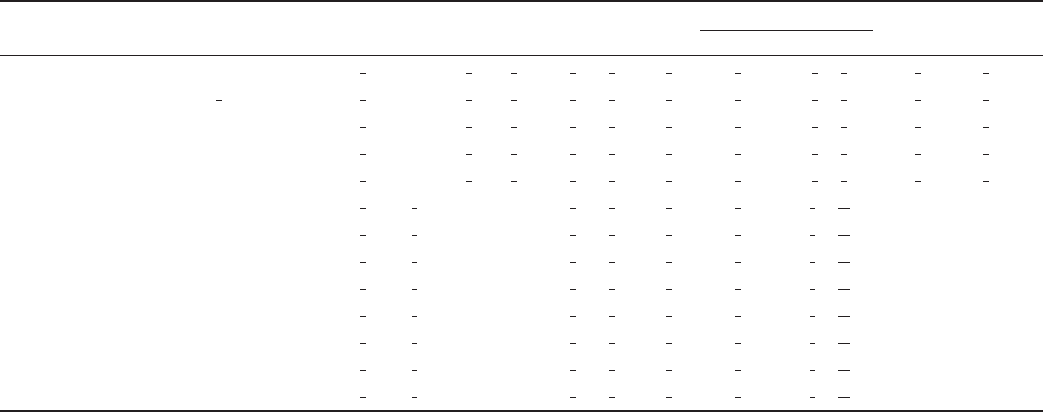
9.126
TABLE 1A Continued.
Dimension Suction discharge
U
designation nominal impeller diameter CP D 2E
1
2E
2
FHODiameter Keyway V, min. XY
A40 4 3 10 23 10 9 7 12 22 1 2124
A20 3 1 13 23 10 9 7 12 20 1 2104
A30 3 2 13 23 10 9 7 12 21 1 2114
A40 4 3 13 23 10 9 7 12 22 1 2124
A80
a
6 4 13 23 10 9 7 12 23 1 2134
A90
a
8 6 13 33 14 16 9 18 30 2 4166
A100
a
10 8 13 33 14 16 9 18 32 2 4186
A105 6 4 15 33 14 16 9 18 30 2 4166
A110
a
8 6 15 33 14 16 9 18 33 2 4186
A120
a
10 8 15 33 14 16 9 18 33 2 4196
A125 6 4 17 33 14 16 9 18 30 2 4166
A110 8 6 17 33 14 16 9 18 32 2 4186
A120 10 8 17 33 14 16 9 18 33 2 4196
a
Suction connections may have tapped bolt holes.
5
16
5
8
3
8
1
2
7
8
3
4
1
2
7
8
5
16
5
8
3
8
1
2
7
8
3
4
1
2
7
8
5
16
5
8
3
8
1
2
7
8
3
4
1
2
7
8
5
16
5
8
3
8
1
2
7
8
3
4
1
2
7
8
5
16
5
8
3
8
1
2
7
8
3
4
1
2
7
8
5
16
5
8
3
8
1
2
7
8
3
4
1
2
7
8
5
16
5
8
3
8
1
2
7
8
3
4
1
2
7
8
5
16
5
8
3
8
1
2
7
8
3
4
1
2
7
8
1
2
5
8
1
8
1
4
1
8
1
2
5
8
1
2
1
4
3
4
1
2
1
2
5
8
1
8
1
4
1
8
1
2
5
8
1
2
1
4
3
4
1
2
1
2
5
8
1
8
1
4
1
8
1
2
5
8
1
2
1
4
3
4
1
2
1
2
5
8
1
8
1
4
1
8
1
2
5
8
1
2
1
4
3
4
1
2
1
2
1
2
5
8
1
8
1
4
1
8
1
2
5
8
1
2
1
4
3
4
1
2
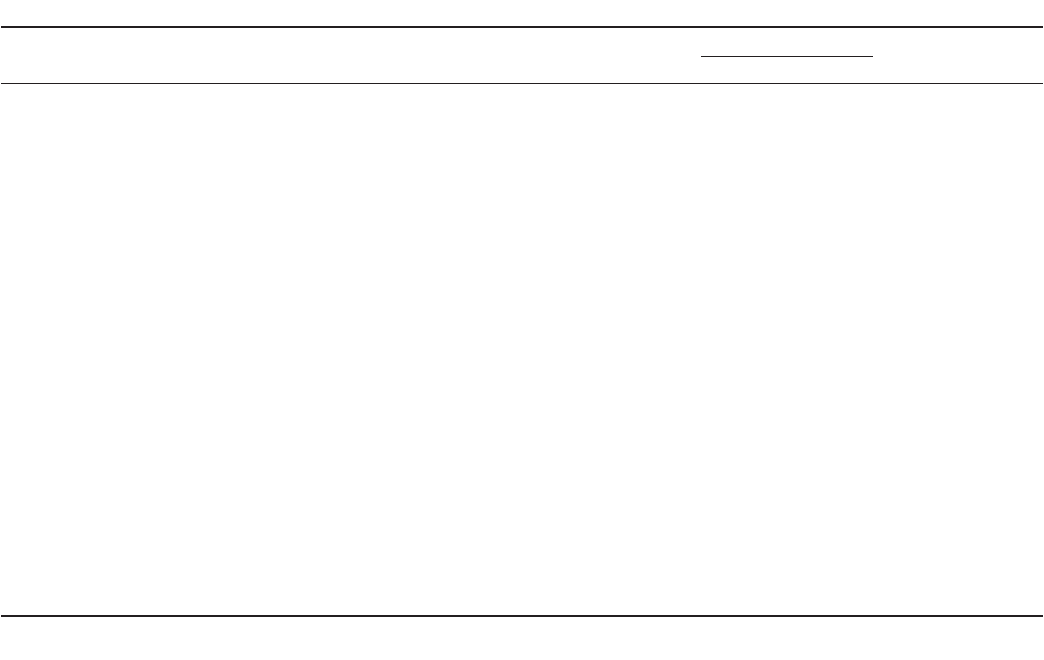
9.127
TABLE 1B Standard ANSI B73.1M dimensions in millimeters for horizontal pumps (Figure 1)
Dimension Suction discharge
U
designation nominal impeller diameter CP
b
D 2E
1
2E
2
FHODiameter Keyway V, min. XY
AA 40 25 150 445 133 152 0 184 16 298 22.23 4.76 2.38 51 165 102
AB 80 50 150 445 133 152 0 184 16 298 22.23 4.76 2.38 51 165 102
AC 80 50 150 445 133 152 0 184 16 298 22.23 4.76 2.38 51 165 102
AB 80 40 200 445 133 152 0 184 16 298 22.23 4.76 2.38 51 165 102
A10 80 50 150 597 210 248 184 318 16 420 28.58 6.35 3.18 67 210 102
AA 40 25 200 445 133 152 0 194 16 298 22.23 4.76 2.38 51 165 102
A50 80 40 200 597 210 248 184 318 16 425 28.58 6.35 3.18 67 216 102
A60 80 50 200 597 210 248 184 318 16 450 28.58 6.35 3.18 67 242 102
A70 100 80 200 597 210 248 184 318 16 490 28.58 6.35 3.18 67 280 102
A05 50 25 250 597 210 248 184 318 16 425 28.58 6.35 3.18 67 216 102
A50 80 40 250 597 210 248 184 318 16 425 28.58 6.35 3.18 67 216 102
A60 80 50 250 597 210 248 184 318 16 450 28.58 6.35 3.18 67 216 102
A70 100 80 250 597 210 248 184 318 16 490 28.58 6.35 3.18 67 280 102
A40 100 80 250 597 254 248 184 318 16 572 28.58 6.35 3.18 67 318 102
A20 80 40 330 597 254 248 184 318 16 520 28.58 6.35 3.18 67 266 102
A30 80 50 330 597 254 248 184 318 16 520 28.58 6.35 3.18 67 266 102
A40 100 80 330 597 254 248 184 318 16 572 28.58 6.35 3.18 67 318 102
A80
a
150 100 330 597 254 248 184 318 16 597 28.58 6.35 3.18 67 343 102
A90
a
200 150 330 860 368 406 229 476 22 775 60.33 15.88 7.94 102 406 152
A100
a
250 200 330 860 368 406 229 476 22 826 60.33 15.88 7.94 102 457 152
A105 150 100 380 860 368 406 229 476 22 775 60.33 15.88 7.94 102 406 152
A110
a
200 150 380 860 368 406 229 476 22 826 60.33 15.88 7.94 102 457 152
A120
a
250 200 380 860 368 406 229 476 22 851 60.33 15.88 7.94 102 483 152
A125 150 100 425 860 368 406 229 476 22 775 60.33 15.88 7.94 102 406 152
A110 200 150 425 860 368 406 229 476 22 826 60.33 15.88 7.94 102 457 152
A120 250 200 425 860 368 406 229 476 22 851 60.33 15.88 7.94 102 483 152
a
Suction connections may have tapped bolt holes.
b
See Table 1A for dimensional symbols.
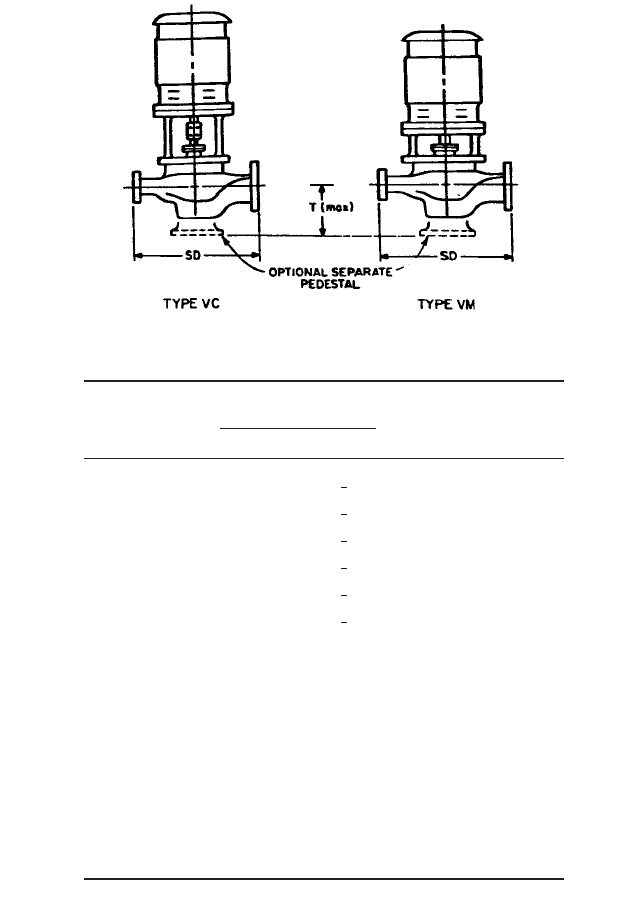
9.128 CHAPTER NINE
TABLE 2A Standard ANSI B73.2M dimensions for vertical
inline pumps
—
USCS units
Pump
ANSI 125, 150, 250,
designation
or 300 flange size, in
SD (10, T (max),
VC (or VM)
a
Suction Discharge 0.08), in in
2015/15 2 1 14.96
2015/17 2 1 16.93 6.89
2015/19 2 1 18.90
3015/15 3 1 14.96
3015/19 3 1 18.90 7.87
3015/24 3 1 24.02
3020/17 3 2 16.93
3020/20 3 2 20.08 7.87
3020/24 3 2 24.02
4030/22 4 3 22.05
4030/25 4 3 25.00 8.86
4030/28 4 3 27.95
6040/24 6 4 24.02
6040/28 6 4 27.95 9.84
6040/30 6 4 29.92
a
Sequence defines design, suction flange size, discharge flange size and
SD dimension
1
2
1
2
1
2
1
2
1
2
1
2
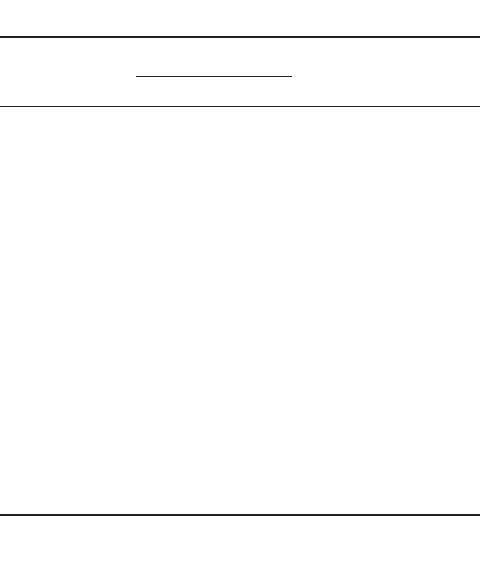
9.6 CHEMICAL INDUSTRY 9.129
TABLE 2B Standard ANSI B73.2M dimensions for vertical
inline pumps
—
SI units
Pump
designation
a
,
Flange Size, mm
SD
b
(2.5, T (max),
VC (or VM) Suction Discharge 2.0), mm mm
50-40-380 50 40 380 175
50-40-430 50 40 430 175
50-40-480 50 40 480 175
80-40-380 80 40 380 200
80-40-480 80 40 480 200
80-40-610 80 40 610 200
80-50-430 80 50 430 200
80-50-510 80 50 510 200
80-50-610 80 50 610 200
100-80-560 100 80 560 225
100-80-635 100 80 635 225
100-80-710 100 80 710 225
150-100-610 150 100 610 250
150-100-710 150 100 710 250
150-100-760 150 100 760 250
a
Sequence defines design, suction flange size, discharge flange size, and
SD dimension
b
See Table 2A for dimensional symbols.
Other global dimensional standards for both horizontal and vertical pumps are also
used. In 1971, the International Organization for Standardization (ISO) reached agree-
ment on a set of dimensional standards for horizontal end-suction centrifugal pumps.This
document, ISO 2858, in SI units, describes a series of pumps of slightly lower capacity
than described in ANSI B73.1. Technical specifications are covered in ISO 5199. Codes for
acceptance tests are given in ISO 2548 and ISO 3555.
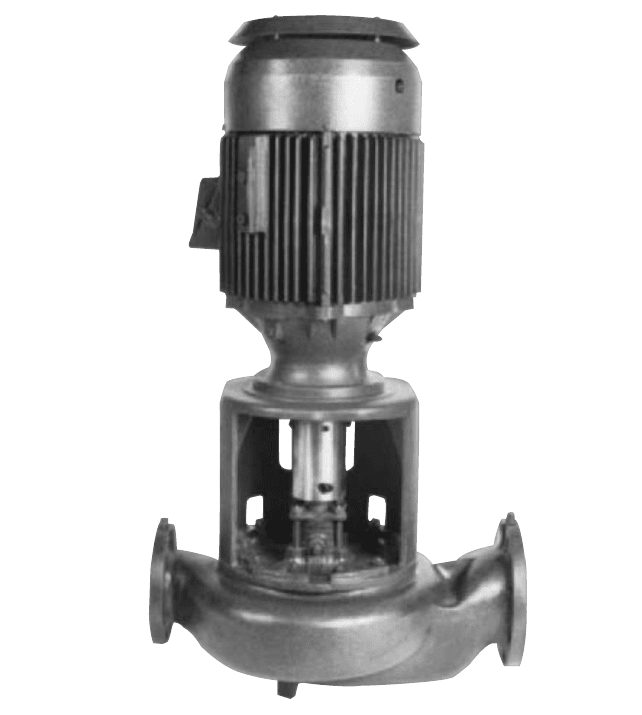
9.130 CHAPTER NINE
FIGURE 2 Vertical in-line centrifugal pump for chemical process applications (Flowserve Corporation)
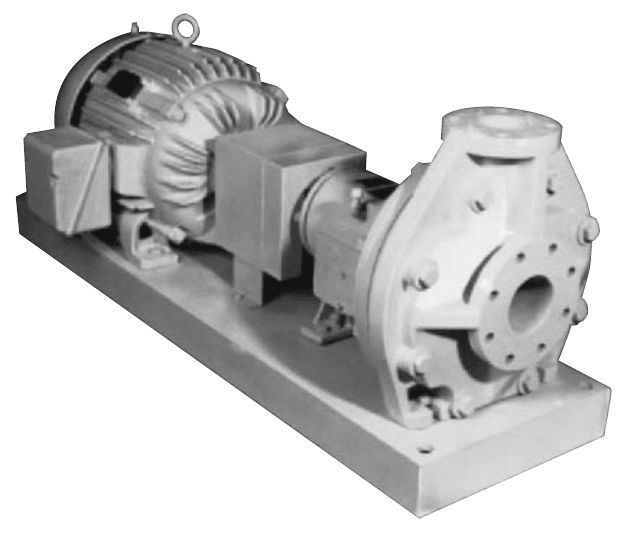
REFERENCES AND FURTHER READING_________________________________
Fontana, M. G., and Greene, N. D. Corrosion Engineering. McGraw-Hill, New York, 1978.
American National Standards for Centrifugal Pump Tests, ANSI/HI 1.6-2000, Hydraulic
Institute, Parsippany, NJ www.pumps.org.
Specifications for Centrifugal Pumps for Chemical Process: ANSI/ASME B73.1M—1991,
Horizontal End Suction; ANSI/ASME B73.2M—1991, Vertical In-line; ANSI/ASME
B73.5—1995, Polymer Materials; American Society of Mechanical Engineers, New York,
NY www.asme.org.
Lee, J. A. Materials of Construction for Chemical Process Industries. McGraw-Hill, New
York, 1950.
National Association of Corrosion Engineers. Corrosion Data Survey. NACE, Houston, 1967.
National Association of Corrosion Engineers. Proceedings, Short Course on Process Indus-
try Corrosion. NACE, Houston, 1960.
9.6 CHEMICAL INDUSTRY 9.131
FIGURE 3 A typical composite pump (Flowserve Corporation)

R. L. JONES
A. W. ELVITSKY
C. C. HEALD
9.133
SECTION 9.7
PETROLEUM INDUSTRY
USE OF PUMPS ______________________________________________________
Pumps of all types are used in every phase of petroleum production, transportation, and
refining.
Production pumps include reciprocating units for mud circulation during drilling and
sucker-rod, hydraulic rodless, and motor driven submersible centrifugal units for lifting
crude to the surface.The most common use of centrifugal pumps in production is for water
flooding (secondary recovery, subsidence prevention, or pressure maintenance).
Transportation pumps include units for gathering, for on and offshore production, for
pipelining crude and refined products, for loading and unloading tankers, tank cars,
barges, or tank trucks, and for servicing airport fueling terminals. The majority of the
units are centrifugal.
Refining units vary from single stage centrifugal units to horizontal and vertical mul-
tistage barrel type pumps handling a variety of products over a full range of temperatures
and pressures. Centrifugal pumps are also used for auxiliary services, such as cooling tow-
ers and cooling water.
Except for some comments about the use of displacement pumps for handling viscous
liquids, this section is restricted to centrifugal pumps, the type most frequently used in the
petroleum industry. It also includes an overview of the requirements for some of the prin-
cipal types of centrifugal pumps.
REFINERY PUMPS ___________________________________________________
Major refinery processes are crude distillation, vacuum tower separation, catalytic con-
version, alkylation, hydrocracking, catalytic reforming, coking, and hydrotreatment for the
removal of sulfur and nitrogen. The products resulting from these processes include motor
9.134 CHAPTER NINE
gasoline, commercial jet fuel and kerosene, distillate fuel oil, residual fuel oil and lubri-
cating oils. The American Petroleum Institute Standard 610, “Centrifugal Pumps for
Petroleum, Heavy Duty Chemical, and Gas Industry Services” (API 610), has established
specifications for the design features required for centrifugal pumps used for general
refinery service. The standard also includes guidance with respect to lighter duty, non-
flammable/nonhazardous services where the requirements of API 610 may not be
required.
API 610 first edition was published in October of 1954. In its initial form, the document
contained only 15 pages of text and applied to single stage overhung pumps only. Since the
original publication, the standard has been updated on a regular basis, approximately
every five to six years. In the eighth edition, it now contains 60 pages of text, 146 pages of
appendices, and covers the specification of as many as 18 different pump types.The eighth
edition, for the first time, shows a “family tree” (Figure 1) of pump types that are poten-
tially covered, and a document organization that makes it clear which requirements apply
to what pumps.
Construction Figure 2 illustrates the details of a single-stage overhung refinery process
pump meeting API 610 requirements. Such a pump is referred to as a Type OH2.The suc-
tion nozzle may be located either at the end or at the top. A spacer coupling is used
between the pump shaft and the driver shaft so the bearing bracket and cover may be
removed without disconnecting the suction or discharge piping. This is referred to as a
back pull-out design. Figure 3 illustrates the details of a between bearings, two-stage, radi-
ally split pump of type BB2. Type BB2 pumps can have one or two stages. Figures 4 and
5 show horizontal multistage pumps. Figure 4 is an axially split machine, Type BB3, and
Figure 5 is a radially split or barrel-type pump, Type BB5. It is a requirement of all pre-
sent day horizontal refinery pumps that the mechanical seal can be changed and the rotor
removed without disconnecting the piping or moving the driver.
API 610 requires standardized seal chamber dimensions for all pumps. For overhung
designs, there is only one seal chamber to seal against leakage to the atmosphere. For
between bearings designs, there are two seal chambers. In single stage overhung pumps,
the seal chamber pressure during pump operation is between suction and discharge pres-
sure, depending on the design of the wear rings and impeller balance holes. For between
bearings pumps, a leak off or balance line system is usually included so both seal cham-
bers operate at the same pressure. That pressure is usually suction pressure. Although
most refiners strongly prefer single seals for cost and reliability reasons, environmental
requirements increasingly drive them toward dual seals. In either case, for each seal, one
of the sealing rings is made of carbon, and the mating ring is either silicon carbide or tung-
sten carbide. API 610 gives standardized auxiliary piping plans for the support of all liq-
uid-type mechanical seals and requires that seals meet requirements of API Standard
682, “Shaft Sealing Systems for Centrifugal and Rotary Pumps” (API 682). Mechanical
seals have proved extremely reliable and virtually no new pumps are supplied with pack-
ing for process services.
The thrust bearing for single stage overhung pumps is subject to axial loading caused
by exposure of one end of the shaft to suction pressure and forces on the impeller due to
the differential between suction pressure and discharge pressure. When single stage
overhung pumps are used for suction pressures in excess of 250 psig (17 MPa), it is com-
mon practice to “unbalance” the impeller wear rings. This is done by making the diame-
ter of the back wear rings smaller than that of the suction side wear rings, or by
eliminating the back wear rings completely. This produces an unbalanced axial thrust
load in the opposite direction to that created by high suction pressure and, thus,
decreases the net axial load on the thrust bearing. In the case of multistage pumps, the
differential pressure across the impellers builds with each stage and some method must
be employed to reduce the load on the thrust bearing. In some designs, axial thrust is
balanced by means of a balance piston/leak-off arrangement; in others, an opposed
impeller arrangement helps to balance axial loads. In all cases, to meet API 610 require-
ments, the bearings must be designed for a minimum life of 25,000 hours of continuous
operation at rated conditions and 16,000 hours at maximum radial and axial loads, at
rated speed.
